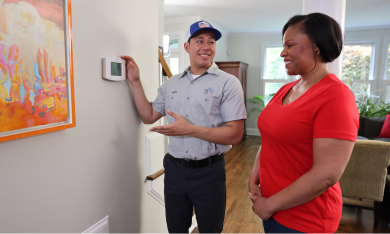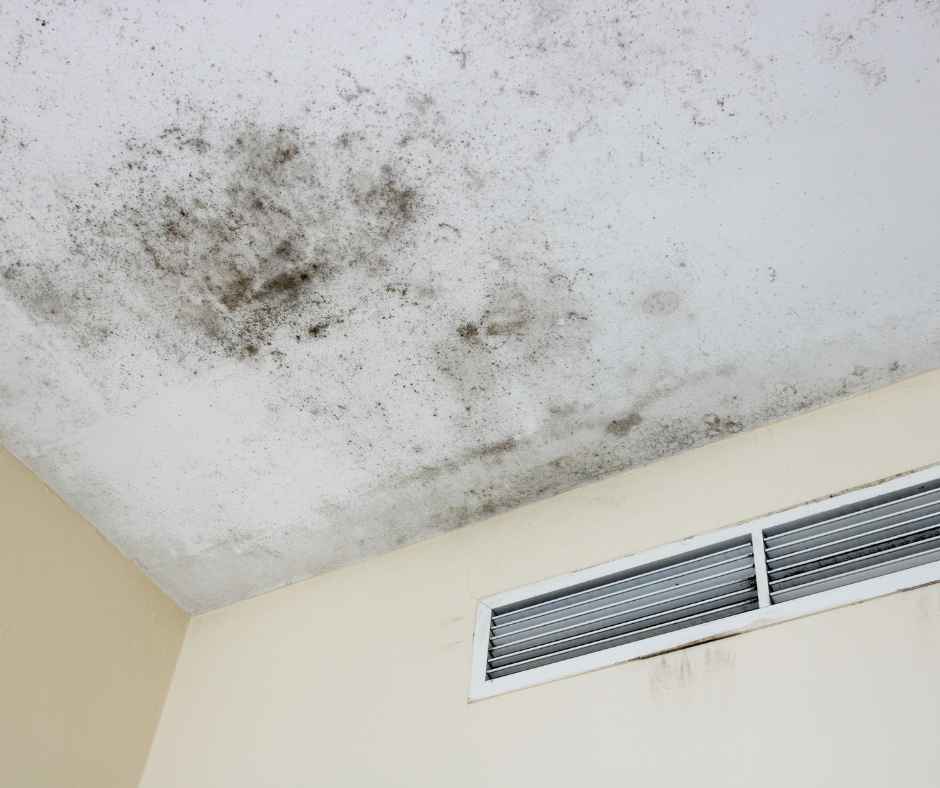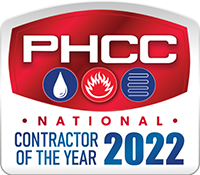

Indoor air quality plays a huge role in your family’s comfort and health. Yet, it’s one of the most overlooked aspects of home maintenance. One key factor that affects it is humidity. When humidity levels inside your home are too high or too low, it can impact everything from how you feel to how your HVAC system performs.
Too much moisture encourages mold and mildew, while air that’s too dry can cause respiratory irritation, static electricity, and even damage to wood furniture or flooring. Striking the right balance keeps your air cleaner, your home more comfortable, and your HVAC system running efficiently year-round.
Maintaining proper humidity levels also helps reduce allergens, prevent condensation, and limit pollutants that circulate through your home’s air. In short, controlling humidity is one of the easiest ways to improve indoor air quality, protect your home, and breathe easier every day.
In this blog, we’ll explore how humidity influences mold growth, the ideal humidity range for your home, and practical steps you can take to improve your air quality. Whether you’re battling musty smells or simply want a fresher, healthier living space, understanding the connection between humidity and air quality is the first step.
The Relationship Between Humidity and Mold Growth
Mold thrives in damp environments, which means indoor humidity is one of the biggest factors influencing how easily mold can take hold in your home. When humidity levels climb above 60 percent, it creates the perfect breeding ground for mold spores to grow on walls, ceilings, windowsills, and even inside HVAC ducts.
Mold spores are always present in the air, but without moisture, they can’t grow. That’s why managing indoor humidity is key to preventing an outbreak. Common household sources of excess moisture include:
- Steam from showers or cooking
- Leaky plumbing or roof issues
- Poor ventilation in basements or crawl spaces
- Overwatering houseplants
- Improperly vented dryers or exhaust fans
If this moisture isn’t controlled, it doesn’t just lead to visible mold; it can also cause hidden damage inside walls or insulation. Over time, that growth can impact your home’s structure and release airborne spores that worsen indoor air quality.
The good news is that reducing humidity limits mold’s ability to spread. By keeping indoor humidity in the ideal range and ensuring good ventilation, homeowners can protect their homes and their health from mold-related problems before they start.
Ideal Humidity Levels for a Healthier Home
Finding the right balance of indoor humidity is essential for comfort, health, and home protection. The ideal indoor humidity range for most homes is between 30 and 50 percent. Staying within this range helps minimize mold growth, maintain comfortable air, and protect your home’s materials from damage.
When humidity drops too low, especially in winter, you might notice dry skin, irritated sinuses, or increased static electricity. On the other hand, humidity that’s too high can make your home feel stuffy and encourage the growth of mold, mildew, and dust mites.
Maintaining proper humidity helps you:
- Improve overall indoor air quality
- Protect wood floors, furniture, and trim from warping or cracking
- Prevent condensation on windows and walls
- Reduce allergens and respiratory irritation
How to Maintain Ideal Humidity Levels:
- Use a dehumidifier in damp areas such as basements or bathrooms
- Run exhaust fans during cooking and showering
- Make sure your air conditioner is properly sized and maintained
- Add a humidifier in winter months if the air feels too dry
- Monitor your home with a digital hygrometer to track changes
Keeping humidity within this healthy range isn’t just about comfort; it’s a major step toward maintaining good indoor air quality and preventing mold before it starts.
How Mold Affects Indoor Air Quality and Health
When mold begins to grow indoors, it does more than create unpleasant odors or stains. It releases microscopic spores into the air that can lower air quality and trigger health problems for people and pets. Even small patches of mold can produce enough spores to spread throughout your home.
Breathing in mold spores can cause a range of reactions, especially for people who have asthma, allergies, or weakened immune systems. Common symptoms include:
- Sneezing, coughing, and congestion
- Itchy or watery eyes
- Throat or skin irritation
- Worsening asthma symptoms
- Persistent fatigue or headaches
In addition to health concerns, mold contributes to poor indoor air quality by increasing airborne particles and allergens. It can also release volatile organic compounds (VOCs) that make the air smell musty and feel heavy.
Cleaning visible mold is only a temporary fix if humidity remains high. The root cause is moisture. When you maintain balanced humidity and ensure good ventilation, you limit the conditions mold needs to survive. Combined with proper HVAC maintenance and filtration, these steps create cleaner, healthier air throughout your home.
Signs Your Home’s Humidity Is Out of Balance
Your home gives off clear signals when humidity levels are too high or too low. Recognizing these signs early can help prevent mold growth, discomfort, and even damage to your HVAC system or furnishings.
Signs of High Humidity
If your home feels damp or sticky, excess moisture may be the cause. Look for these indicators:
- Condensation on windows or mirrors
- Musty or stale odors
- Visible mold or mildew in corners or bathrooms
- Peeling paint or wallpaper
- Sticky or clammy indoor air
- Wood floors or furniture starting to warp
Signs of Low Humidity
Air that is too dry can be just as uncomfortable. During the winter, heating systems often remove moisture from the air, which can lead to:
- Dry skin and irritated sinuses
- Cracking or shrinking wood furniture and floors
- Static electricity buildup
- Increased dust and airborne particles
- Sore throats or dry eyes
When humidity is unbalanced, your HVAC system has to work harder to maintain comfortable temperatures. Over time, this can raise your energy bills and shorten the lifespan of your equipment. Monitoring humidity levels with a hygrometer and adjusting as needed helps your home stay comfortable, efficient, and healthy year-round.
How to Control Humidity and Prevent Mold
Maintaining healthy humidity levels is one of the most effective ways to protect your home from mold and poor air quality. With the right balance of ventilation, temperature control, and maintenance, you can create a cleaner and more comfortable indoor environment.
1. Improve Ventilation
Good airflow keeps moisture from building up in problem areas. Use exhaust fans in kitchens, bathrooms, and laundry rooms to remove excess steam. Make sure vents discharge outdoors instead of into attics or crawl spaces. Opening windows occasionally on dry days can also help exchange stale indoor air for fresh outdoor air.
2. Use Dehumidifiers in Damp Areas
Basements, crawl spaces, and bathrooms are common trouble spots. A portable or whole-home dehumidifier can remove excess moisture and keep humidity at ideal levels. Regularly empty and clean the unit to prevent bacterial growth.
3. Address Water Leaks Quickly
Even small leaks can lead to big humidity problems. Check plumbing, roofing, and foundation areas regularly for signs of moisture. Repairing leaks early prevents hidden mold growth and structural damage.
4. Maintain HVAC Systems
Your heating and cooling system plays a major role in managing humidity. Clean or replace air filters regularly to prevent dust and mold buildup. Schedule professional HVAC inspections at least twice a year to ensure your system is operating efficiently.
5. Consider Air Purifiers
High-quality air purifiers with HEPA filters can capture mold spores, dust, and allergens that circulate through your home. While they do not reduce humidity directly, they work alongside other measures to improve overall indoor air quality.
By combining these strategies, homeowners can maintain a balanced indoor environment that limits mold growth and supports better health. Consistency is key. Small adjustments made throughout the year can prevent major air quality issues later.
Professional HVAC Solutions for Air Quality Improvement
While homeowners can do a lot to manage humidity on their own, professional HVAC solutions provide the most reliable long-term control over moisture and air quality. Certified technicians can assess your home’s environment, recommend the right equipment, and ensure that everything operates efficiently.
HVAC Inspections and Maintenance
Regular HVAC maintenance is essential for balanced humidity and clean air. During a professional inspection, technicians check for clogged filters, refrigerant issues, or improper airflow that can affect both temperature and humidity levels. Routine tune-ups help your system work more efficiently and prevent future moisture problems.
Dehumidifier and Humidifier Installation
Adding a whole-home dehumidifier or humidifier to your HVAC system allows for automatic humidity control throughout the house. These units monitor humidity levels and adjust them as needed, which keeps air quality consistent year-round.
Air Filtration and Purification Systems
Advanced filtration systems capture microscopic particles such as mold spores, dust, and pollen that standard filters may miss. Many modern systems include UV lights or electronic air cleaners that neutralize airborne contaminants before they circulate through your home.
Air Quality Testing
If you are unsure about what is affecting your indoor environment, professional air quality testing can help identify issues like high humidity, poor ventilation, or hidden mold growth. Technicians use specialized instruments to measure air composition and recommend customized solutions.
Investing in professional HVAC services not only improves comfort but also protects your home’s air quality and structure. With expert help, homeowners can maintain a stable, healthy indoor environment that supports better breathing and long-term energy savings.
Breathe Easier with the Right Indoor Humidity
Your home’s humidity level affects more than just comfort. It shapes the air you breathe, the way your HVAC system performs, and the overall health of your living space. By understanding how humidity, mold, and air quality work together, you can take control of your indoor environment and prevent costly issues before they start.
If you’re ready to take the next step toward a healthier home, the experts at United Air Temp can help. Our team provides comprehensive HVAC inspections, humidity control solutions, and professional air quality testing to identify and resolve hidden issues.
Contact United Air Temp today to schedule an in-home evaluation and discover how easy it is to breathe cleaner, fresher air all year long.













